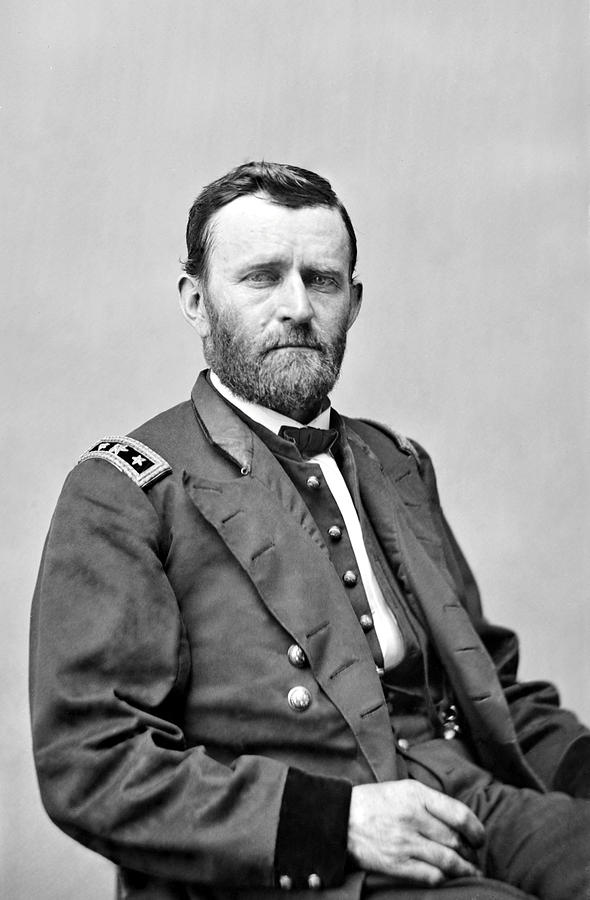We played a game of Shiloh using the Bloody Big Battle rules Saturday afternoon. Originally planned for 5 players, things started to go awry early. Jay came to the rescue of a damsel in distress, always a priority for the Fencibles. Andrew, who we’ve not seen in a dog’s age, begged off; his young kids and wife had fallen ill that morning. After lunch, it was decided that Carl and Bill would play the Union and I would take the Confederates (all units in italics) and see if I could keep my ancestors in servitude.
Legend: yellow discs = disrupted units, yellow counters = silenced artillery, blue counters = spent units, dead soldiers/horses = a base wiped out, .22 shell = low on ammo.
I started with Hardee and Withers assaulting Sherman, backed up by two smoothbore artillery battalions in close range. The fire attack was in the 25 column, with hits starting at 5+. I rolled a 2, the first of many as it turned out. A second disruption on a unit is moot. But in the following assault I rolled a 6 and Carl got 1. The resulting +9 (after tactical modifiers) saw Sherman lose two bases, become spent and fall back 12”. Hardee exploited 6” forward and almost caught Sherman’s artillery that had evaded from the fight. Withers exploited into Prentiss, sending them back spent with a hit. It was a stunning first turn. And the last of that sort of thing.
You can see the Union starting to form a line. Could I rush in the Hornet’s Nest before they had more than Prentiss’ spent unit in it?
Nope. Crappy movement rolls slowed progress. Worse was to come.
I rolled 2 (on 2D6) movement roll Hardee (my best unit), down to 1 because they were in the woods, which means disrupted units retreat a full move and lose a base. Panic? Or an unfounded rumor of enemy in the rear, with a regiment sent off table to guard baggage? Whatever, it was a disaster. And the 2s just kept on coming, sometimes when shooting but most often when rolling for movement. It did generate a lot of laughter among the blue coats.
I changed my dice, rubbed my right hand on the statue of Durga (Hindu goddess of war) and promptly rolled another 2. More Yankee laughter. Amidst this I had a serious brain fart. There is a minor typo on the first page of the Shiloh scenario - it is a draft document. It says the game lasts 9 turns, 5 for the first day. I thought, oh crap, we’ve been playing this scenario wrong since 2016 (last played 2017). So I kept the first day at 5 turns. Afterwards I read the note on the second page indicating the first day lasts 9 turns. With a glacial advance and some rapid movement to the rear, I couldn’t even get a second unit up to the Hornet’s Nest by nightfall in 5 turns. It did bring a merciful end to the Confederate slow dance. We played the night turn after turn 5. Buell and Lew Wallace arrived. It looked like someone tipped the north up and every blue coated soldier landed on the table.
We
played 5 turns in about 2 hours, averaging about 25 minutes per turn. I am
starting to think we should only play the first day. If the Confederates take Pittsburg
Landing, they win (once in 6 games previously). Otherwise, they get the
historical result, losing with ghastly casualties on both sides. Oh yes, since I
could not get my attack in gear after the first turn, the losses were trifling
for this game, 3 bases of Union infantry, 2 infantry and 1 cavalry base for the
Confederates, 1 infantry and 1 cavalry base run away. Going by a
rough estimate that each destroyed base is half casualties and half folks “helping
friends to the rear”, that would be ~1,500 losses on each side with an additional 2,000 Rebels taking an early trip to the showers, instead of the
over 20,000 losses in the real thing. Even doubling the losses to 3,000 per side is a walk in the park compared to the actual battle.
Well,
it was good to get together. Carl and Bill haven’t seen each other since before
the plague. We had lunch and lots of stories, and my dice antics amused them
greatly. Hopefully I got all those 2s out of my system and next time will see a
torrent of 12s. Yeah.
That’s
it until April. We travel south soon to touch base with family there.
PS
a check of the rule book shows that Withers
needed
to contact Sherman with his Front Center Point to assault, so that unit could
not legally take part in the attack. With the 6-1 die rolls, Sherman would have
been whipped just the same. Perhaps my astoundingly bad dice were karma for
overloading the assault. Que sera. Mea culpa.























